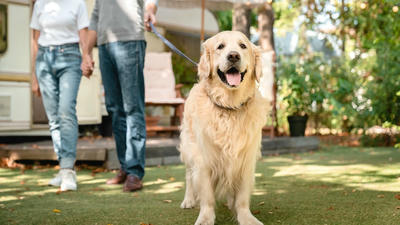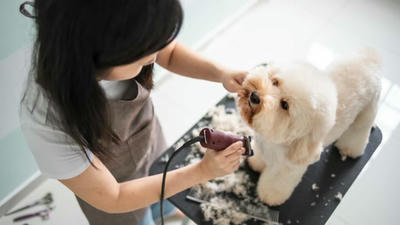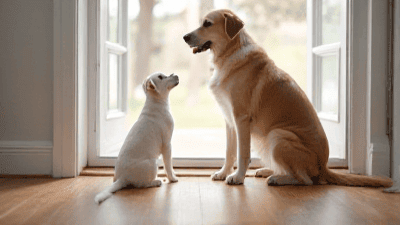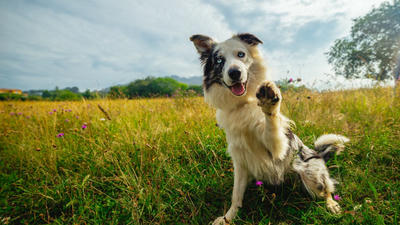
Welcoming a puppy into your home is one of life's most rewarding experiences. However, along with the joy of having a new furry friend comes the responsibility of training them properly. Proper training is crucial not only for the puppy’s behavior but also for building a strong bond between you and your new companion.
Understanding Puppy Development
To train your puppy successfully, it is vital to understand the different stages of their development. Puppies go through several key phases as they grow, and recognizing these milestones can help you tailor your training methods appropriately.
Neonatal Stage (0-2 Weeks)
During this stage, puppies are entirely dependent on their mother. They cannot see or hear yet, and their needs are primarily met through nursing. This phase is critical for their early development, but training usually does not begin until later.
Transitional Stage (2-4 Weeks)
Between two to four weeks, puppies begin to open their eyes and ears, becoming more aware of their surroundings. This is when they start to explore their environment, and they begin to interact with their siblings. Socialization starts here, but formal training is still not very common.
Socialization Stage (4-12 Weeks)
This stage is the most critical period for socialization. Puppies are more receptive to new experiences and interactions, making it essential to expose them to various people, other animals, and different environments. Proper socialization during this time can prevent behavioral problems later in life.
Juvenile Stage (3-6 Months)
Puppies begin to test boundaries during this phase. They may exhibit increased energy and might show signs of stubbornness. Consistent training is crucial as they begin to assert their independence.
Adolescent Stage (6-18 Months)
This stage is marked by hormonal changes that can lead to more challenging behaviors. Training requires continued patience and consistency, as puppies will test limits more frequently.
Understanding these developmental phases helps you set realistic expectations and guides how you approach training at different ages.
The Importance of Socialization
Socialization is a cornerstone of puppy training. Proper exposure to various experiences helps your puppy learn to navigate the world with confidence. Here are some socialization tips for new puppy owners:
1. Introduce New Environments
Take your puppy to different environments such as parks, busy streets, and even pet-friendly stores. Exposing them to new sights, sounds, and smells can prevent anxiety later on.
2. Meet New People and Animals
Allow your puppy to meet different types of people, including children, seniors, and others. Also, introduce them to well-mannered dogs and other animals. Ensure each interaction is positive and rewarding.
3. Positive Experiences
Always aim to create positive associations with new experiences. Use treats, praise, and toys to reinforce good behavior during these introductions.
4. Puppy Classes
Consider enrolling in puppy kindergarten classes. These classes provide an excellent opportunity for socialization and are often led by experienced trainers who understand puppy behavior.
Basic Training Commands
Once your puppy is socially adjusted, it’s time to start teaching them basic commands. These commands form the foundation for good behavior and will help you communicate effectively with your puppy.
1. Sit
Teaching your puppy to "sit" is simple and serves as a great starting point:
- Get Their Attention: Hold a treat close to their nose.
- Move the Treat: Slowly raise your hand over their head. As they look up, their rear should lower to the ground.
- Reward Immediately: Once they sit, praise them and give them the treat.
- Repeat: Keep practicing until they can sit on command without the treat.
2. Stay
The "stay" command is critical for keeping your puppy safe. Here's how to teach it:
- Start with a Sit: Have your puppy sit.
- Say "Stay": Use a firm but gentle voice to say "stay."
- Step Back: Take a small step back. If they stay, reward them. If they move, gently guide them back to the starting position and try again.
- Increase Duration: Gradually increase the distance and duration of the stay command.
3. Come
The "come" command is vital for ensuring your puppy returns to you. Here's how to teach it:
- Start Indoors: Begin in a safe, enclosed area.
- Call Their Name: In a cheerful tone, say your puppy's name followed by "come."
- Reward Them: When they come to you, reward them generously with treats and affection.
4. Down
The "down" command is essential for calming your puppy:
- Get Them in a Sit: Start with them in a sitting position.
- Move the Treat Down: Hold a treat and move it down to the ground. Their nose should follow the treat downwards, prompting them to lie down.
- Reward: Once they are lying down, praise them and provide the treat.
5. Leave It
Teaching "leave it" is crucial for preventing your puppy from picking up dangerous or unwanted items:
- Show a Treat: Hold a treat in one hand and a less desirable item in the other.
- Say "Leave It": Firmly but calmly tell your puppy to "leave it."
- Reward When They Ignore: When they ignore the treat in your hand, reward them with a treat from the other hand.

Positive Reinforcement
Positive reinforcement is the most effective method for training puppies. This technique emphasizes rewarding desired behaviors rather than punishing undesirable ones. Here are some key principles to adopt:
1. Reward Immediately
Timing your rewards is crucial. Reward your puppy immediately after they perform the desired behavior so they can make the connection between the action and the reward.
2. Variety of Rewards
Use different types of rewards, such as treats, praise, toys, or playtime, to keep your puppy engaged. Discover what motivates your puppy most and use it as a reward.
3. Consistency is Key
Be consistent in your commands and rewards. Use the same cues for specific behaviors to avoid confusing your puppy.
4. Avoid Punishment
Instead of punishing your puppy for undesirable behavior, redirect them to a more appropriate action. For example, if they are chewing on furniture, encourage them to use their chew toy instead.
Establishing a Routine
Puppies thrive on routines. A consistent daily schedule can help them feel secure and understand what to expect. Here are some components to consider including in your routine:
1. Feeding Times
Feed your puppy at the same times each day to help regulate their digestion and establish a sense of stability.
2. Bathroom Breaks
Take your puppy outside frequently, especially after meals and naps, to prevent accidents indoors. This will help them learn to associate going outside with bathroom breaks.
3. Exercise and Playtime
Set aside regular times for walks, play, and training sessions. Puppies have lots of energy, so physical and mental exercise is crucial for their development.
4. Sleep Schedule
Puppies need plenty of sleep to grow and learn. Create a comfortable space for them to rest and ensure they get enough naps throughout the day.
Common Behavior Challenges
As you train your puppy, you may encounter common behavior challenges. Understanding how to address these issues will help you respond effectively.
1. Biting and Nipping
Puppies often nip as a way to explore their world. Here’s how to handle it:
- Redirect Behavior: If your puppy bites, replace your hand with a toy they can chew on.
- Use a Firm Voice: If the biting continues, let out a yelp to mimic how another puppy would respond to rough play.
2. Jumping
Puppies frequently jump up to greet people. To curb this behavior:
- Ignore the Jumping: Don’t give them attention when they jump. Turn away and wait for them to calm down.
- Reward Calm Behavior: When they settle down, reward them with attention and treats.
3. Chewing
Chewing is a natural behavior but can lead to destruction. Manage it by:
- Providing Chew Toys: Make sure they have appropriate toys to chew on.
- Redirecting: Keep an eye on your puppy and redirect them to their toys when they start chewing on furniture.
4. Barking
Excessive barking can be a challenge. To manage it:
- Identify Triggers: Determine why your puppy is barking and address the underlying cause.
- Teach "Quiet": Reward your puppy for being quiet when situations arise that typically provoke barking.
Consistency and Patience
Training a puppy takes time, patience, and consistency. Be prepared for setbacks and celebrate small victories. Here are some tips:
1. Short Training Sessions
Keep training sessions brief, around 5-10 minutes. Puppies have short attention spans, so frequent short sessions can be more effective than long ones.
2. Gradual Progression
Start with basic commands and gradually introduce more complex commands and tricks as your puppy becomes more comfortable with training.
3. End on a Positive Note
Always aim to end training sessions on a high note. Leave your puppy with a successful command or playful interaction to reinforce a positive training experience.
Seeking Professional Help
If you encounter challenges you cannot resolve, seeking professional help can be beneficial. Here are some options:
1. Puppy Classes
Puppy training classes offer a structured environment for training and socialization. Professional trainers can provide valuable insights and guidance.
2. Behaviorists
If your puppy exhibits severe behavioral issues, consider consulting an animal behaviorist for expert advice tailored to your situation.
Conclusion
Training your puppy is one of the most important responsibilities of dog ownership. By understanding your puppy's developmental stages, practicing positive reinforcement, and remaining consistent in your training approach, you can cultivate a well-mannered dog that you and your family will cherish for years to come. Remember, patience and love are key to successful training, and the bond you build with your puppy will make every effort worthwhile.



